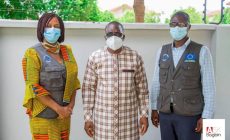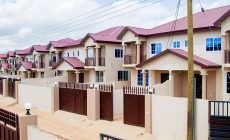2021 Census: Over 60% of Ghanaian population is literate
- Posted on
- Comment

Nearly 70 per cent (69. 8 per cent) of the literacy rate among the population six years and above in nine out of the 16 regions can read and write, the 2021 Population and Housing Census report has indicated.
This means that seven out of 10 people aged six and above can read and write.
Males make up 74.1 per cent of the literate population whilst 34.4 per cent are females.
Greater Accra recorded the highest figure of 87.9 per cent with the Savannah region recording the lowest of 32.8 per cent.
Also, 20.8 per cent of people three years above had never attended school, out of that, 24.4 per cents were females and 17 per cent, were males.
The report said 40.7 per cent of the population 18 years and above currently attending school was at the tertiary level whilst 13 per cent of those who had attended school in the past had tertiary education as the highest level attained.
The proportion of urban dwellers 18 years and above who had attended school in the past and had tertiary education as the highest level attained was 16.6 per cent, almost three times that of rural areas of 5.9 per cent
It said persons 15 years above who attended school in the past and attained Junior High School (54.3 per cent) were females compared to 45.7 per cent of males in urban areas and an almost equal proportion of females (50.6 per cent) and males (49.4 per cent) in rural areas.
For Senior High Schools, males constituted a higher proportion with sex differential being three times as high in rural, constituting 20.8 per cent compared to seven per cent in the urban areas.
The report showed that 13.2 per cent of the urban population three years and
older had never attended school compared to three in 10 of the rural population of the same age bracket.
On languages, it said 80.6 per cent of the urban population six years above was literate in at least one language compared to 55.2 per cent of the rural population of the same age with the rural-urban differential similar for males and females.
It said for the proportion of the literate six years above that can read and write in two languages, almost all 95.6 per cent, was literate in English and one Ghanaian language.
On difficulty in performing activities, the report showed that, four regions-Greater Accra, Ashanti, Eastern and
Central – accounted for 53.6 per cent of the population five years above with difficulty in performing any activity.
The proportion of persons aged 5-17 years with varying degrees of difficulty in performing various activities was 3.0 per cent, with a higher representation in rural areas and urban areas.
The figures, according to the Ghana Statistical Service, would provide the government with the necessary information to address gender and geographic disparities and target interventions for persons with difficulties in performing activities.
Ghana’s population is now 30.8 million, with an increase of 6.1 million people
from the 2010 population figures, which was 24.6 million.
The 2021 PHC counted and collected detailed information on all persons that spent the Census Night – Sunday 27th June 2021 -in the country.
It provided important information to support the evidence-based implementation of the national development agenda and supported the tracking of achievements of the Sustainable Development Goals and Agenda 2063 of the African Union.
-GNA








 (Selorm) |
(Selorm) |  (Nana Kwesi)
(Nana Kwesi)